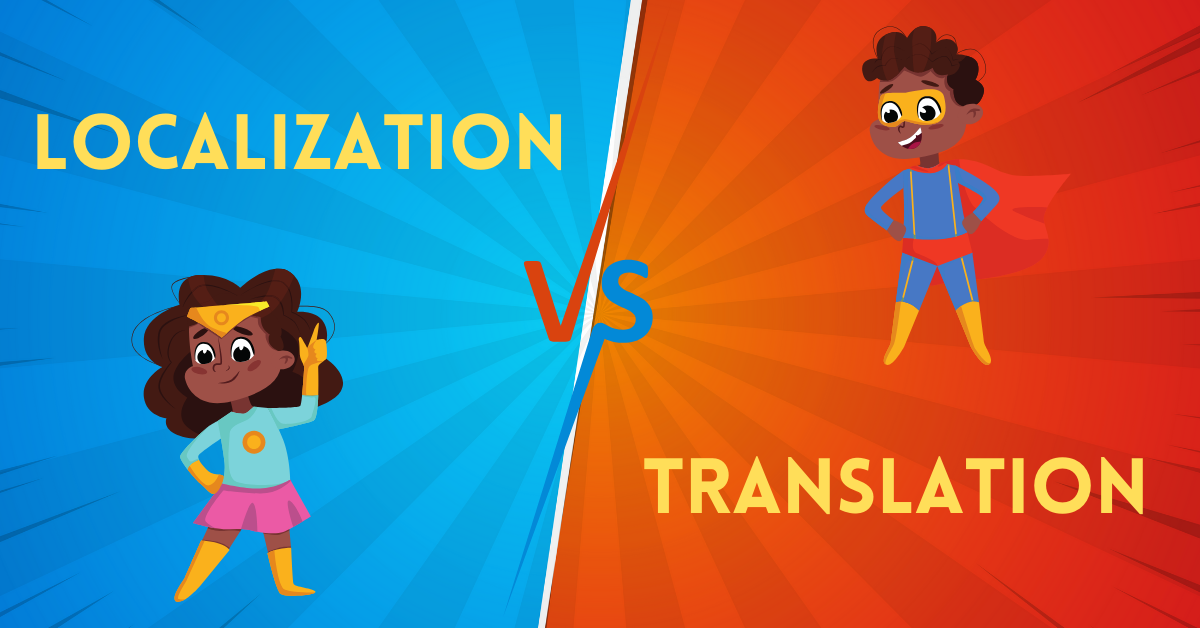Localization and Translation: What's the Difference?
 Abhishek Kumar
Abhishek Kumar
As businesses expand globally, they encounter the challenge of communicating effectively across diverse cultures and languages. This is where the concepts of translation and localization come into play. Although they are often used interchangeably, translation and localization serve distinct purposes and involve different processes. Recognizing these differences is crucial for companies aiming to engage international audiences authentically and meaningfully. By delving into the nuances of translation and localization, we can better understand how each contributes to global communication strategies and how they can be leveraged to enhance user experience in different cultural contexts.
What is Translation?
Translation is the process of converting text from one language into another while preserving the original meaning. It focuses primarily on linguistic accuracy and ensuring that the translated text conveys the same information as the source text. Translation involves:
Linguistic Accuracy: Translators must ensure that the translated text is grammatically correct and accurately represents the source content.
Cultural Neutrality: Traditional translation often maintains a degree of cultural neutrality, focusing more on linguistic equivalence than cultural adaptation.
Literal Fidelity: The aim is to stay as close to the original text as possible, minimizing interpretation or alteration.
The translation is typically used for documents like legal contracts, medical reports, technical manuals, and literature where the precise meaning of the text must be preserved.
What is Localization?
Localization goes beyond translation by adapting content to fit the cultural, linguistic, and societal norms of the target audience. This process is crucial for ensuring that the content is culturally appropriate and resonates with local users. Localization involves:
Cultural Adaptation: Content is modified to align with the cultural expectations, values, and norms of the target audience. This includes adjusting idioms, humor, symbols, and references.
Functional Adaptation: This may involve changing dates, currency, measurement units, and formats to suit local conventions.
User Experience: Localization considers the overall user experience, ensuring that the content is relevant and engaging for the target audience.
Localization is essential for products like websites, software, games, marketing materials, and customer support resources where user engagement and cultural relevance are paramount.
Key Differences Between Localization and Translation
1. Scope and Depth
Translation: Focuses on converting text from one language to another with high linguistic fidelity.
Localization: Involves a comprehensive adaptation of content to meet the cultural, functional, and experiential needs of the target audience.
2. Cultural Sensitivity
Translation: This may not account for cultural differences extensively, aiming for linguistic accuracy instead.
Localization: Deeply considers cultural nuances, ensuring that content feels native to the target audience.
3. Application
Translation: Used for documents where exact wording and meaning are critical.
Localization: Used for products and services where user engagement and cultural relevance are crucial.
4. Process
Translation: Often a linear process focused on linguistic conversion.
Localization: A multifaceted process that includes cultural consultation, design adaptation, and sometimes even product modification.
The Importance of Choosing the Right Approach
Choosing between translation and localization depends on the nature of the content and the goals of the project. For legal documents, scientific research, or technical manuals, translation is usually sufficient. However, for websites, software, marketing campaigns, and customer-facing materials, localization is essential to ensure that the content is relevant and engaging for the target audience.
How Localization and Translation Companies Operate
Translation Companies
Translation companies specialize in providing accurate linguistic conversions of text. They employ professional translators who are proficient in the source and target languages and often have subject matter expertise in fields such as law, medicine, engineering, or literature. The primary services offered by translation companies include:
Document Translation: Conversion of written documents into the target language.
Certified Translation: Translation of documents requiring legal or official validation.
Technical Translation: Translation of technical manuals, user guides, and product specifications.
Translation companies emphasize precision, consistency, and adherence to the original text’s meaning.
Localization Companies
Localization companies, on the other hand, offer a broader range of services aimed at adapting content for specific markets. These companies employ not only linguists but also cultural consultants, designers, and user experience experts. Key services provided by localization companies include:
Software Localization: Adapting software applications to meet local user expectations, including interface changes, language support, and functionality adjustments.
Website Localization: Tailoring websites to different cultural and linguistic groups, involving translation, cultural adaptation, and technical modifications.
Multimedia Localization: Adapting audiovisual content such as videos, games, and interactive media for different markets.
Localization companies focus on delivering content that feels native and engaging to the target audience, ensuring a seamless user experience.
Conclusion
While translation and localization are both critical in the global communication landscape, they serve distinct purposes and involve different processes. Translation ensures linguistic accuracy and preserves the original meaning of the text, making it ideal for documents where precise wording is essential. Localization, however, adapts content to fit the cultural and functional needs of the target audience, making it vital for products and services aimed at international markets.
Understanding the differences between these two processes can help businesses and organizations choose the right approach for their needs, ensuring effective communication and engagement with their global audiences. Whether through translation or localization, the goal is to bridge linguistic and cultural gaps, creating a meaningful connection with users worldwide.
Read next: Best Website Translation Companies
Subscribe to my newsletter
Read articles from Abhishek Kumar directly inside your inbox. Subscribe to the newsletter, and don't miss out.
Written by
